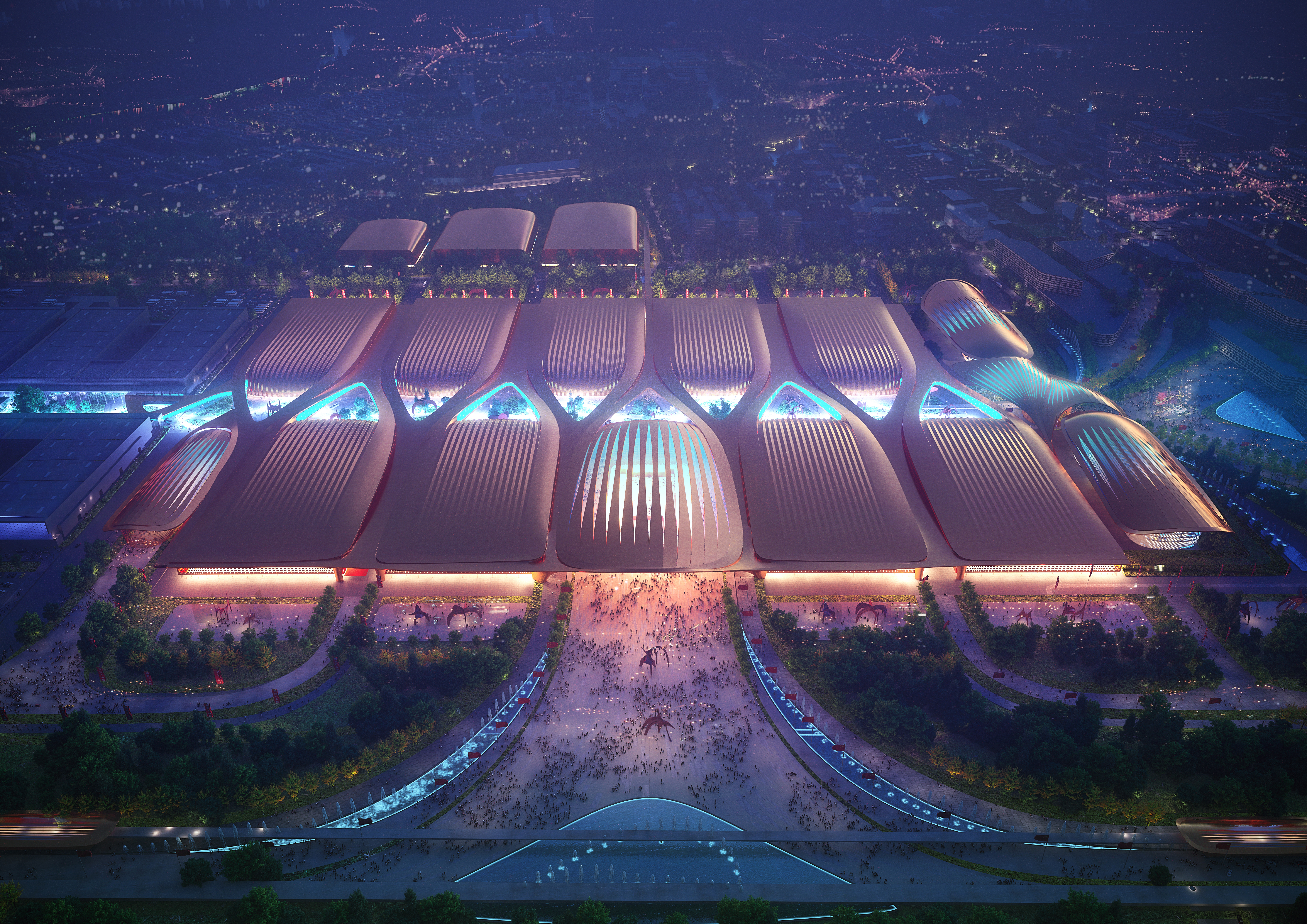
Phase II of Beijing's International Exhibition Centre unveiled
ZAHA HADID ARCHITECTS (ZHA) has been selected to design Phase II of Beijing’s International Exhibition Centre.
The project will significantly extend the centre which has quickly become an essential venue for global conferences, trade fairs and industry expos - especially as Beijing continues to grow as the cultural and academic capital of China.
More than 438,000 square metres will be added in total and the existing exhibition halls, conference centre and hotel will become better integrated through a series of new courtyards and bridges.
The courtyards themselves will include landscaped gardens, cafes and outdoor public event spaces. The bridges will provide a further layer of connectivity between the centre’s myriad of facilities.

Above and Below: Bridges will link disparate parts of the exhibition centre. Images courtesy of ZHA.

This connectivity has been made a priority across ZHA’s design. The firm has divided the movement of people, goods and vehicles throughout the centre into three separate routes to aid circulation, provide optimal adaptability and avoid disruption to ongoing events.
The roof of the building, which has drawn inspiration from traditional Chinese architecture, will also insulate the interior while allowing for maximum sound absorption.
The symmetric geometries of the roof also provide a column free flexible space below that is able to quickly adapt to a variety of different exhibitions and uses.
Most of the design can be prefabricated offsite, with construction times and costs are likely to be reduced as a result.

Above and Below: The design draws on elements from traditional Chinese architecture. Images courtesy of ZHA.

The exhibition centre will have a number of sustainable aspects, including solar arrays for renewable energy and a smart building management system for ventilation, as well as rainwater collection and grey water recycling components.
The scheme is one of many of ongoing major projects for ZHA in China. Others include a pair of nearly 400-metre high towers for Shenzhen and a floating arts centre in Jinwan.
ZHA has been under the leadership of Patrik Schumacher since Zaha Hadid’s death in 2016.








